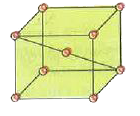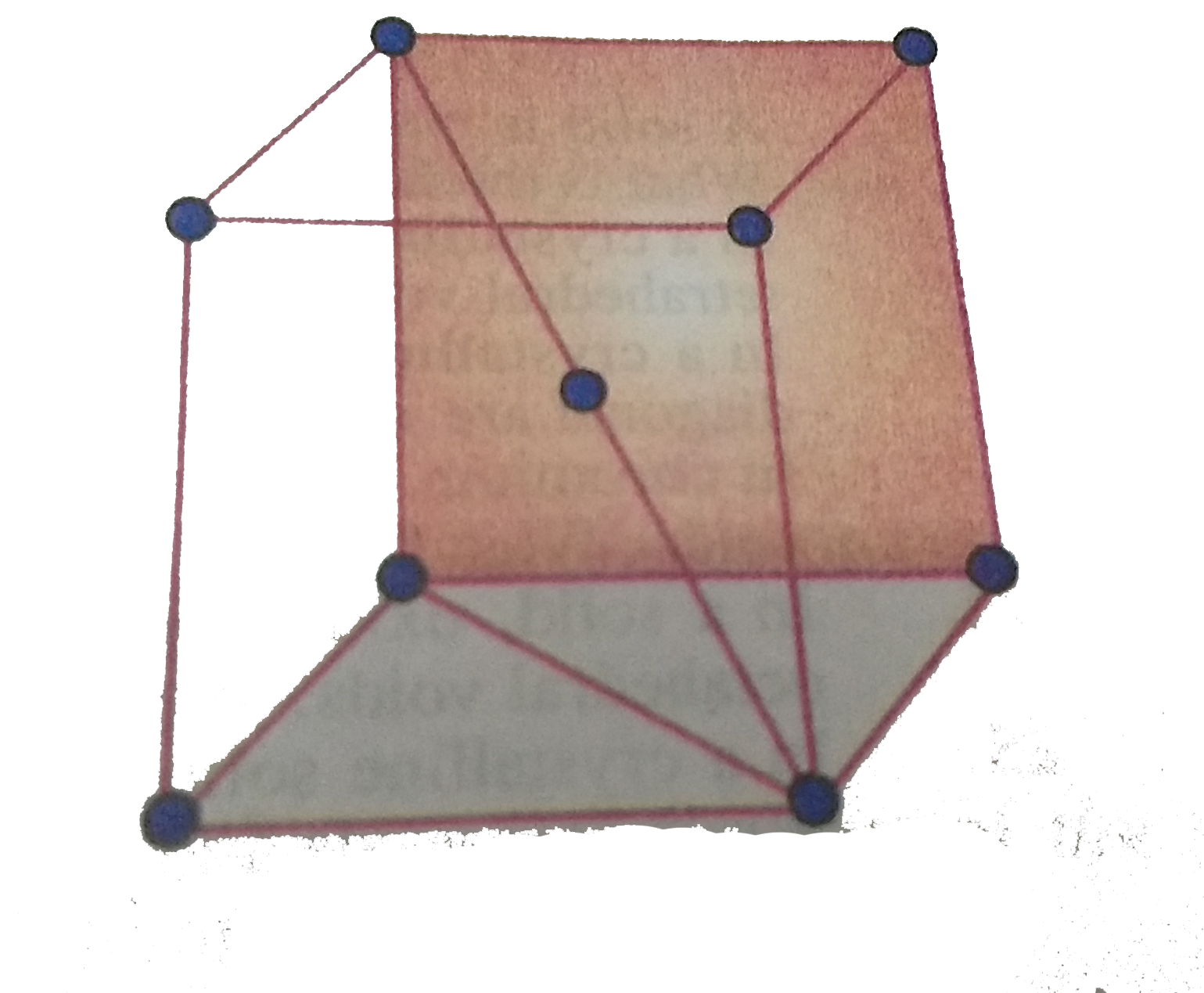Potassium crystallizes in a body-centered cubic lattice with edge length, a = 5.2 Å
(a) What is the distance between nearest neighbours?
(b) What is the distance between next-nearest neighbours?
(c) How many nearest neighbours does each K atom have ?
(d) How many next-nearest neighbours does each K atom have ?
(e) What is the calculated density of crystalline potassium ?
The correct Answer is:4.5 Å ,5.2Å,c8,D6 e0.92 g/cm3
Topper's Solved these Questions
- SOLID STATEBOOK - MOTIONCHAPTER - SOLID STATEEXERCISE - Exercise - 4 | Level-I
9 Videos
- SOLID STATEBOOK - MOTIONCHAPTER - SOLID STATEEXERCISE - Exercise - 4 | Level-II
9 Videos
- SOLID STATEBOOK - MOTIONCHAPTER - SOLID STATEEXERCISE - Exercise - 2 (Level-II) (TRUE / FALSE : State whether the following statements are True or False :)
4 Videos
- Salt AnalysisBOOK - MOTIONCHAPTER - Salt AnalysisEXERCISE - Exercise - 4 Level-II
22 Videos
- SURFACE CHEMISTRYBOOK - MOTIONCHAPTER - SURFACE CHEMISTRYEXERCISE - Exercise - 3 (Level-II)
12 Videos
Similar Questions
Potassium crystallizes in body centered cubic lattice with a unit cell length a=5.2Å
(A) what is the distance betweenn nearest neighbourss?
(B) What is the distance between next nearest neighbour ?
(C) How many nearest neighbours does each K atom have ?
(D) How many next nearest neighbours does each K has ?
(E) What is calculated density of crystalline K
View SolutionPotassium crystallizes in body centered cubic lattice with a unit cell length a=5.2Å
(A) what is the distance betweenn nearest neighbourss?
(B) What is the distance between next nearest neighbour ?
(C) How many nearest neighbours does each K atom have ?
(D) How many next nearest neighbours does each K has ?
(E) What is calculated density of crystalline K
View Solution
Knowledge Check
A metal crystallize in a body centered cubic lattice (bcc) with the edge of the unit cell 5.2Å. The distance between the two nearest neighour is
A10.4ÅB4.5ÅC5.2ÅD9.0Å
An element 'X' has bcc lattice as shown below :
The unit cell length, a is 306 pm.
(a) What is the distance between nearest neighbours?
(b) What is the distance between next nearest neighbours?
(c) How many nearest neighbours does each X atom have ?
(d) How many next nearest neighbours does each X have ?

View SolutionPotassium crystallises in a bcc lattice as shown in figure :
(a) What is the distance the nearest neighbours ?
(b) What is the distance between the next nearest neighbours ?
(c) How many nearest neighbours does each potassium atom have ?
(d) How many next nearest neighbours does each potassium atom have ?

View SolutionPotassium crystallises in a bcc lattice as shown in figure :
(a) What is the distance the nearest neighbours ?
(b) What is the distance between the next nearest neighbours ?
(c) How many nearest neighbours does each potassium atom have ?
(d) How many next nearest neighbours does each potassium atom have ?

View SolutionA metal crystallizes in a body centred cubic lattice (bcc) with the edge of the unit cell 5.2Å. The distance between the next nearest neighbour is:
View SolutionA metal crystallize in a body centered cubic lattice (bcc) with the edge of the unit cell 5.2Å. The distance between the two nearest neighour is
View SolutionPlatinum crystallize in a face-centred cubic crystal with a unite cell length a. the distance between nearest neighbours is:
View SolutionPlatinum crystallize in a face-centred cubic crystal with a unite cell length a. the distance between nearest neighbours is:
View Solution
